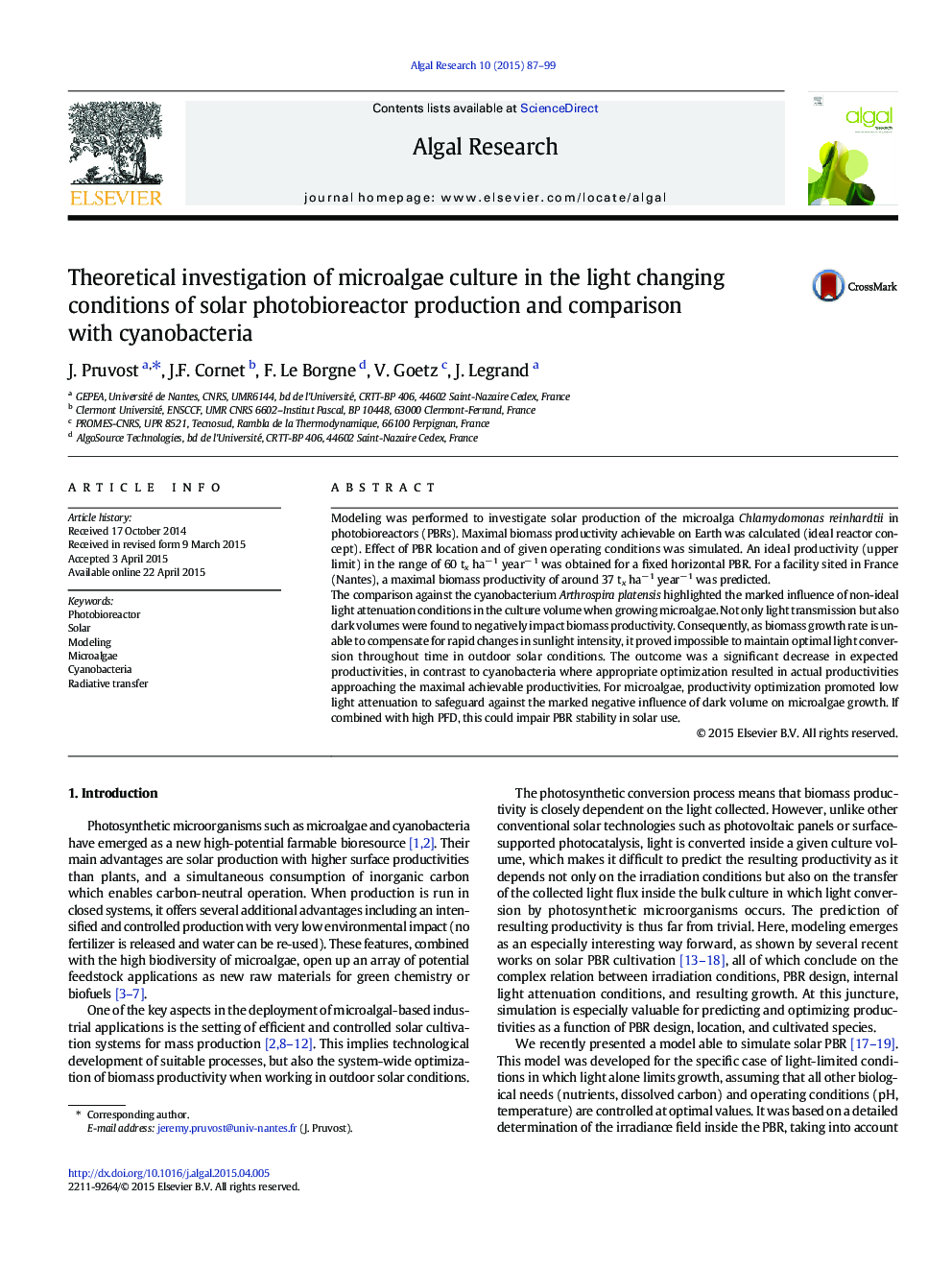| Article ID | Journal | Published Year | Pages | File Type |
|---|---|---|---|---|
| 1742020 | Algal Research | 2015 | 13 Pages |
•Maximal biomass productivity achievable for C. reinhardtii on Earth was calculated.•Effect of PBR location and operating conditions was simulated.•Microalgae revealed to be highly influenced by light attenuation conditions.•Optimal light conversion throughout time was proved impossible to maintain.•Low light attenuation derived from productivity optimization could impair PBR stability.
Modeling was performed to investigate solar production of the microalga Chlamydomonas reinhardtii in photobioreactors (PBRs). Maximal biomass productivity achievable on Earth was calculated (ideal reactor concept). Effect of PBR location and of given operating conditions was simulated. An ideal productivity (upper limit) in the range of 60 tx ha− 1 year− 1 was obtained for a fixed horizontal PBR. For a facility sited in France (Nantes), a maximal biomass productivity of around 37 tx ha− 1 year− 1 was predicted.The comparison against the cyanobacterium Arthrospira platensis highlighted the marked influence of non-ideal light attenuation conditions in the culture volume when growing microalgae. Not only light transmission but also dark volumes were found to negatively impact biomass productivity. Consequently, as biomass growth rate is unable to compensate for rapid changes in sunlight intensity, it proved impossible to maintain optimal light conversion throughout time in outdoor solar conditions. The outcome was a significant decrease in expected productivities, in contrast to cyanobacteria where appropriate optimization resulted in actual productivities approaching the maximal achievable productivities. For microalgae, productivity optimization promoted low light attenuation to safeguard against the marked negative influence of dark volume on microalgae growth. If combined with high PFD, this could impair PBR stability in solar use.
